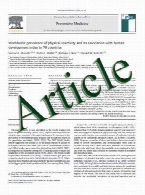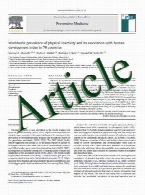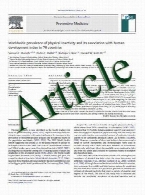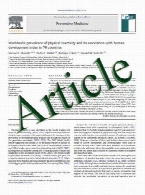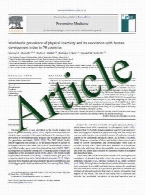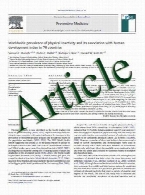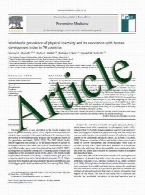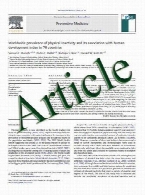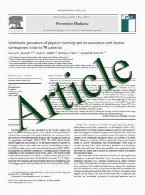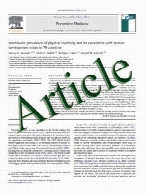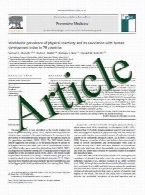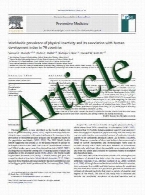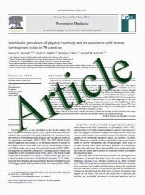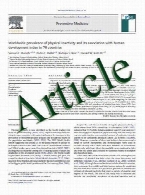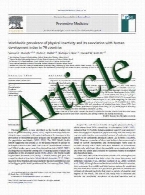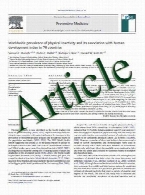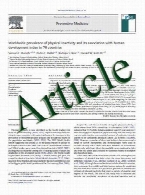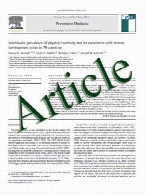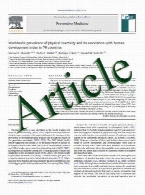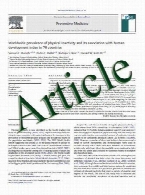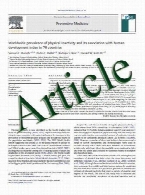

Inflammatory activation: cardia ...
Although inflammation is a physiologic response designed to protect us from infection, when unchecked and ongoing it may cause substantial harm. Bot ...
Resveratrol in cardiovascular d ...
Resveratrol is a well-known antioxidant that exists in grape skin/seed, red wine, and the root of Polygonum cuspidatum, a traditional Chinese and Ja ...
Pharmacotherapy of heart failur ...
Aging is associated with numerous alterations in body composition and organ function that result in substantial changes in the absorption, distribut ...
New roles for renin and proreni ...
The renin-angiotensin-aldosterone-system (RAAS) plays a central role in the pathophysiology of heart failure and cardiorenal interaction. Drugs inte ...
Tissue inhibitor of metalloprot ...
Remodeling of the myocardium and the extracellular matrix (ECM) occurs in heart failure irrespective of its initial cause. The ECM serves as a scaff ...
Cystatin C: a step forward in a ...
The cardiorenal syndrome is a clinical manifestation of the bidirectional interaction between the heart and kidneys. Evaluating renal function is an ...
Role of various proteases in ca ...
It is believed that cardiac remodeling due to geometric and structural changes is a majormechanism for the progression of heart failure in different ...
Heart failure with preserved ej ...
Heart failure is an epidemic in the elderly and has become a leading cause for hospitalization and death. Heart failure with preserved ejection frac ...
Device monitoring strategies in ...
Acute heart failure syndromes (AHFS) represent the most common discharge diagnoses in adults over age 65 and translate into dramatically increased h ...
Erratum to: Resveratrol and red ...
Resveratrol, a polyphenol phytoalexin, present in red wine and grapes possesses diverse biochemical and physiological properties, including estrogen ...
The potential role of cardiac r ...
Cardiac resynchronization therapy (CRT) has been demonstrated to improve mortality and morbidity in patients with chronic, stable heart failure who ...
Implantable cardioverter-defibr ...
Implantable cardioverter-defibrillators have proven efficacy in reducing mortality in patients with reduced left ventricular ejection fraction in bo ...
Current and future role of card ...
Cardiac resynchronization therapy (CRT) has revolutionized the treatment of selected patients with systolic heart failure. It is well recognized, ho ...
Assessing patients for catheter ...
Heart rhythm problems are common among patients who are hospitalized with acute heart failure (HF). Although it is often difficult to determine whet ...
Atrioventricular junction ablat ...
Atrial fibrillation is the most common arrhythmia and is especially clinically important in patients with heart failure. Prolonged atrial fibrillati ...
Managing patients with ICD shoc ...
We review the pharmacologic, interventional and device programming treatment options for patients with implantable cardioverter-defibrillators who p ...
Strategies for pacemaker progra ...
In the past decade, cardiac pacing devices (either permanent pacemakers or Implanted Cardioverter Defibrillators) have become increasingly common in ...
Novel techniques for assessment ...
The evaluation of left ventricular systolic function is one of the most common reasons for referral for a non-invasive cardiac imaging study. In add ...
The prognostic significance of ...
Fragmented QRS (fQRS) may occur due to non-homogeneous activation of ischemic ventricles. We want to investigate the prognostic significance of a fQ ...
Inhibition of mini-TyrRS-induce ...
To clarify whether a VE-cadherin-dependent pathway allows mini-TrpRS to inhibit mini-TrpRS-induced new blood vessel formation in endothelial cells ( ...
Atrioventricular nodal ablation ...
Patients often require antiarrhythmic drugs to control tachycardia after permanent pacemaker implantation (PMI) for bradycardia-tachycardia syndrome ...
Steady-state B-type natriuretic ...
B-type natriuretic peptide level is increased in patients with atrial fibrillation. The aim of the present study was to present the distribution of ...
Impact of hypertension on short ...
Hypertension is well established as a risk factor for the development of atherosclerosis. Data on the impact of hypertension in patients with ST ele ...
Hypocellularity and insufficien ...
The aim of this study was to identify the clinical parameters of absolutely poor-prognosis patients with chronic critical limb ischemia (AP-CLI). Si ...
Obstructive sleep apnea as a po ...
Obstructive sleep apnea (OSA) is not only a cause of hypertension; it also possibly affects the pathogenesis and progression of aortic disease becau ...

